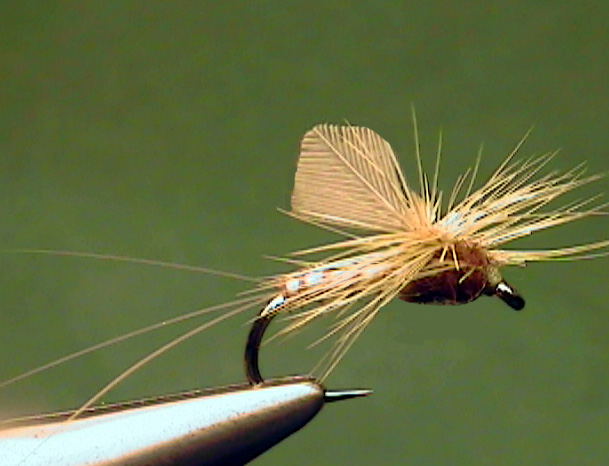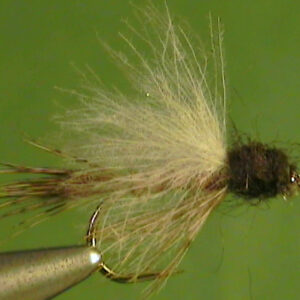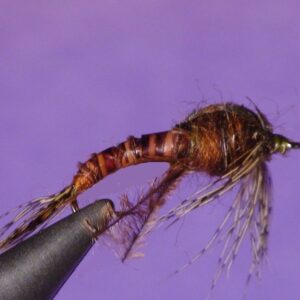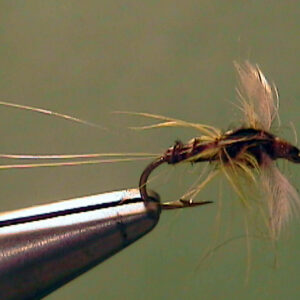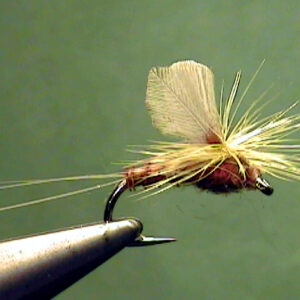Hook Size: 12/14
females. It’s possible the fish will become selective on one of the other sexes, but don’t
become overly concerned about this until one or the other proves it’s not going to work.
Remember the male is the smaller of the two. In real life, the male and female looks like
two completely different mayflies. Of course the size is the main big difference. The male
is called the Red Quill and the female the Hendrickson.
The Hendrickson hatch takes place when the water is between 50 and 55 degrees F. It
needs to remain within that temperature range for three or four days for it to occur and
the time of the season needs to be near the normal hatch time. The water temperature
will often get that high during the Spring only to fall back down much colder. The hatch
won’t occur under those circumstances unless the water has been warm for a while.
The color of the male abdomen and thorax is much darker, has a red tint to it and is
slimmer than the female. The female abdomen is more of a cream color with a slight red
or dark green tint. The big red tomato color eyes of the male makes more of a difference
than it actually is but this makes it easy to distinguish or identify the males and the
females. The females have very small eyes.
Presentation:
In most types of water the Hendricksons and Red Quill duns are found at the ends of the
long runs and riffles. This is especially true of pocket water. If it’s a smooth, flowing
tailwater, they are usually congregated in the current seams. Even in pocket water, the
current seams will eventually collect them, especially if the water in near the cold side of
the scale when the hatch occurs.
An up stream presentation usually works best. You may note that the trout are rising to
the duns only in a certain area of the stream you will want to take advantage of that by
getting into the best possible position. It’s often tough to get very close to the fish in
smoother, moderately flowing water without spooking them. A downstream presentation
may be needed under these circumstances. Although it’s possible that the trout may
ignore the duns altogether and feed only on the emergers, during most of the hatches we
have encountered, they took the duns very aggressively.
The Hendrickson hatch doesn’t last over a long period of time and the size of the hatch
will vary from one location to another, some streams having huge hatches and some
having smaller, sporadic hatches.
